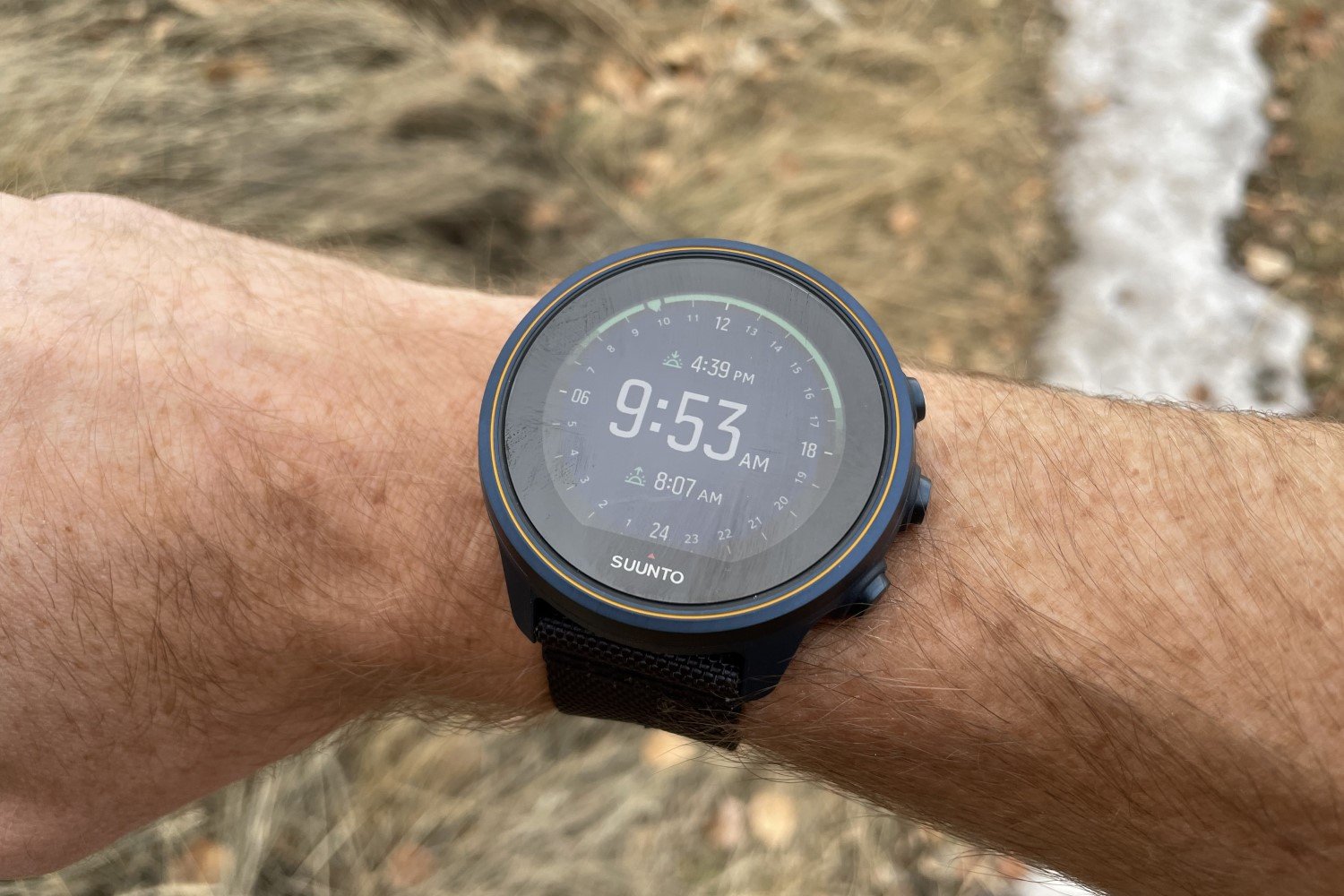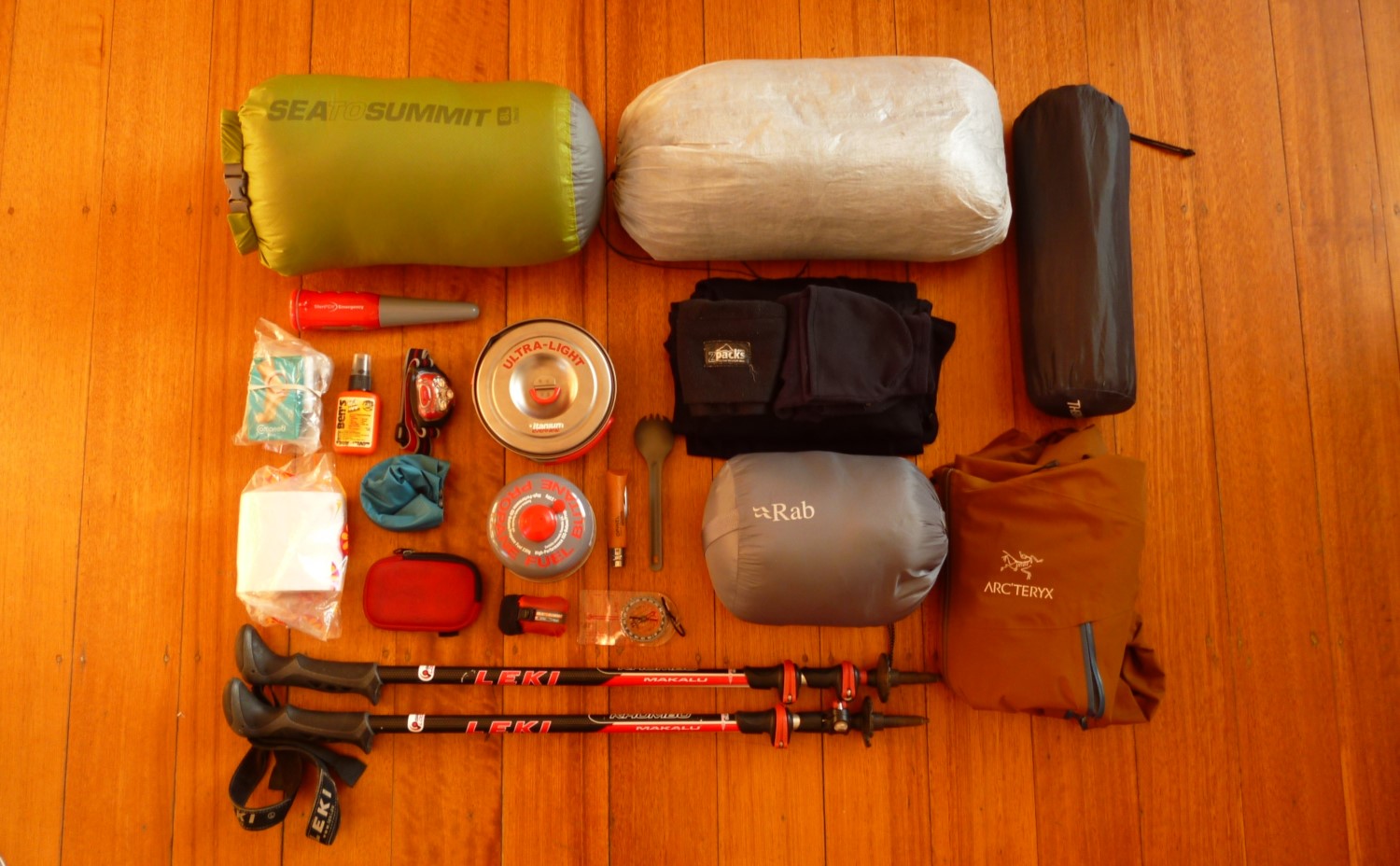Best Trail and Ultra Running Watches of 2023
JUMP TO: GARMIN FENIX 7 / COROS VERTIX 2 / SUUNTO 9 BARO / GARMIN EPIX (GEN 2) / POLAR GRIT X / COROS APEX / AMAZFIT T-REX 2 / BUYING ADVICE
Author: Steve Edgerton
The Short Version
Best Overall: Garmin Fenix 7
Best All-Rounder: COROS Vertix 2
Best for Ultra Distances: Suunto 9 Baro
Best for Navigation: Garmin Epix (Gen 2)
Best for Everyday Training: Polar Grit X
Best Value and Durability: COROS Apex
Best on a Budget: Amazfit T-Rex 2
The Long Version
Trail and ultra running adventures are usually remote in location and long in duration. With that in mind, any good GPS watch for trail running and ultra running will meet two mandatory requirements: accurate and reliable GPS features and outstanding battery life.
All of the best trail and ultra running watches will do that, and often much more. Other particularly important considerations include mapping and navigation features, durability, smartphone compatibility, multisport functionality, and ABC (Altimeter, Barometer, Compass) features. Trail and ultra running watches often are excellent choices for multisport athletes who also spend a lot of time not just running, but hiking, backpacking, and backcountry skiing as well.
We have extensively researched every GPS watch on the market to find the ones that offer trail and ultra runners the best performance and value for long days (or multiple days) spent running.
From short weekend trail jaunts to epic multi-day mountain ultramarathons—and with every budget in mind—these are the best trail and ultra running watches at the moment.
If you love reading this review of the best trail and ultra running watches, then you'll likely love reading some of our other running related content:
Need To Know What To Look Out For?
Looking for your very first ultra and trail running-specific GPS watch? Wondering what GNSS, ABC, and the abundance of other acronyms mean, and why they matter? Then don’t miss our buying guide at the end of the article where we dive deeper into what makes a GPS watch excel for trail and ultra running!
Best Overall: GARMIN FENIX 7
BATTERY LIFE: Watch mode: 18-57 days; GPS mode: 57 hours-136 hours
DISPLAY: Transflective touchscreen
MAPS: Yes
WEIGHT: 79 g
DIMENSIONS: 47 x 47 x 14.5 mm
PRICE: $$$
PROS: Long battery life, top-notch UI, excellent health metrics, mapping, and accuracy
CONS: Expensive, ABC calibration can be difficult
Garmin has long been a leader in GPS tech and endurance sports wearables, advantages that lend themselves well to designing the best watches for trail and ultra running.
The Garmin Fenix 7 delivers on every important trail and ultra metric. Its impressive battery life will last 57 hours in full GPS mode. By reducing GPS signal frequency, you can go as long as 136 hours, enough to comfortably get through any 100-mile race or even multi-day fastpacking efforts without worrying about a recharge.
The Fenix 7 user experience is outstanding. There are custom profiles for dozens of sports, from trail running (obviously) to cycling, hiking, cross-country skiing, climbing, swimming, and beyond. Navigation is intuitive and the touchscreen is effective, even when wet. You can also navigate purely through the dedicated buttons, which is great when moving fast or wearing gloves.
The accuracy of Garmin watches is typically unmatched, and the Fenix 7 is no exception. Dual-frequency and multi-GNSS capabilities will keep your GPS tracks accurate, even when running through deep canyons and dense forests where satellite line of sight is limited.
The watch comes with preloaded topographic maps, and you can add custom GPX files of routes. You will never again worry about taking a wrong turn mid-race with the Fenix 7’s real-time navigation capabilities and crisp display.
For runners wanting to maximize battery life, there is also a solar-powered model, the Garmin Fenix 7X Solar, which provides 122 hours of optimal GPS tracking, up to 578 hours in battery-saver mode. Ultra runners will appreciate the 7X’s built-in LED flashlight for a backup light source when night descends.
By making no compromises in quality and performance, the Fenix 7 is expensive—truly its only significant downside. But for dedicated trail runners and multisport enthusiasts consistently spending long days in the backcountry, the Fenix 7 is the best overall GPS watch and more than worth the investment.
Best All-Rounder: COROS VERTIX 2
BATTERY LIFE: Watch mode: up to 60 days; GPS: 90-140 hours
DISPLAY: Transflective touchscreen
MAPS: Pre-loaded maps, turn-by-turn navigation
WEIGHT: 89 g
DIMENSIONS: 50.3 x 50.3 x 15.7mm
PRICE: $$$
PROS: Durable, outstanding battery life, ECG sensor for heart rate variability
CONS: Expensive, clunky touchscreen, resume later function only for running activities
COROS has established itself as a purveyor of durable GPS watches with hard-to-believe battery lives. The Vertix 2 is the best of the bunch.
With up to 90 hours in full GPS mode, the Vertix 2’s battery life dwarfs even the Fenix 7’s. It comes in a rugged casing that will stand up to endless abuse on the trail, making for a reliable, all-around watch for ultrarunning, fastpacking, and backpacking that goes for days on a single charge.
Borrowing much of its user interface from Garmin, the COROS Vertix 2 is easy to navigate through a combination of its touchscreen, push buttons, and scroll wheel. The scroll wheel moves easily when running though, potentially messing with your activity if you are not in lock mode.
The watch also features dual frequency and multi-GNSS capabilities, topographic maps with navigation functionality, music storage, and extensive health and training metrics, including a unique Electrocardiogram (ECG) sensor for taking heart rate variability readings.
GPS is comparable to the Fenix 7 in accuracy and far exceeds its battery life, but falls slightly short of Garmin’s training metric software and navigation technology. We recommend the Vertix 2 for trail and ultra runners who seek maximal battery life in a well-rounded, high-performing package.
Best for Ultra Distances: SUUNTO 9 BARO
BATTERY LIFE: Watch mode: 7-14 days; GPS: 25-120 hours
DISPLAY: LCD touchscreen
MAPS: Wireless route import and turn-by-turn navigation
WEIGHT: 81 g
DIMENSIONS: 50 x 50 x 16.8 mm
PRICE: $$
PROS: Sleek look, extensive battery life, the best GPS power saving options
CONS: Lacks many features, bulky, slow interface
The Suunto 9 Baro has carved out a niche as an accurate, race-ready watch for trail and ultra runners, offering up to 170 hours of highly accurate GPS tracking.
While COROS and Garmin now offer watches that exceed Suunto models in overall GPS mode, they do so by lowering GPS data sampling intervals, reducing the accuracy of your track. The 9 Baro avoids this, thanks to Suunto’s unique FusedTrack software.
FusedTrack combines GPS samples with data from its wrist-based accelerometer, compass, and gyro to provide accurate activity tracks, even with reduced GPS sampling frequency in battery-saving modes.
The 9 Baro has three energy modes: it has 25 hours of battery in Performance, 50 hours in Endurance, and 120 hours in Ultra. GPS sampling decreases from 1 second, to 60, to 120, for each respective mode, but accuracy stays remarkably consistent.
Suunto watches also feature reliable charger adaptor systems. A magnetic connector makes it possible to charge the 9 Baro on the go with the watch still loosely fitted on your wrist.
Other standout tools, including turn-by-turn navigation and a barometer that predicts impending storms, are excellent for backcountry endurance efforts. The 9 Baro will also track 80 different athletic activities beyond running. But beyond these capabilities, the 9 Baro is light on features for an endurance smartwatch at its price point, and its UI design and usability disappoint compared to Garmin and COROS.
The 9 Baro’s sweet spot is ultramarathons or treks requiring 30+ hours of tracking and solid navigational tools—think mountainous 100-milers like Hard Rock or UTMB, mega-endurance events like the Cocodona 250, and any multi-day stage race or backpacking route.
No other watch provides the same accuracy and performance as the 9 Baro after about the 30-hour mark on a single charge, making it the top performer for ultramarathons and extended backpacking trips.
Best for Navigation: GARMIN EPIX (GEN 2)
BATTERY LIFE: Watch mode: 6-16 days; GPS mode: 42-75 hours
DISPLAY: AMOLED touchscreen
MAPS: Full-color topographic maps, turn-by-turn navigation
WEIGHT: 76 g
DIMENSIONS: 47 x 47 x 14.5 mm
PRICE: $$$$
PROS: Pre-loaded maps, high-resolution display, accurate, loaded with features
CONS: Expensive, sacrifices battery life for display capabilities
The Garmin Epix (Gen 2) is very similar to the Fenix 7, but trades in some battery life for unbeatable screen display quality and mapping functionality.
The Epix battery is good for up to 42 hours in full GPS mode and 75 hours in battery-saving mode—more than respectable. And by turning off all other satellite systems and other nonessential watch functions in “expedition” mode, you can go for days of limited GPS functionality.
With a crystal clear AMOLED screen and 416 x416 pixels, it is a joy to use the Epix for its turn-by-turn navigation, round-trip routing, and detailed continent-wide TopoActive maps. It even comes loaded with dozens of ski resort maps.
Colors are vivid, and the display is sharp: the screen is always highly visible, making detailed maps easy to read in all conditions. Trail runners who frequently use a watch to navigate tricky routes will love this thing.
In terms of GPS accuracy, ABC sensors, health and fitness metrics, and other smartwatch features like music storage and tap payment, the Epix Gen 2 is nearly identical to the Fenix 7. The Epix does cost more, thanks to its uncompromising display, making it the most expensive watch on this list. But for map geeks and runners regularly undertaking long routes in complex terrain, the extra investment will be worth it.
Best for Everyday Training: POLAR GRIT X
BATTERY LIFE: Watch mode: up to 7 days; GPS mode: 40-100 hours
DISPLAY: MIP (Memory In Pixel) touchscreen
MAPS: GPX uploads, turn-by-turn navigation with Komoot routes
WEIGHT: 65 g
DIMENSIONS: 47 x 47 x 13 mm
PRICE: $$
PROS: Solid price point, sleek design, great fitness tracking tools
CONS: Turn-by-turn navigation is clunky, no smartwatch features
The Polar Grit X is a no-nonsense GPS watch. It has all the features a good trail and ultra running watch requires and is significantly cheaper than our favorite high-end models.
This watch boasts an impressive 40-hour battery life with full GPS, ABC sensors, and assisted-GNSS support for solid GPS accuracy. Though you can import GPX routes for turn-by-turn navigation to the Grit X via the desktop app, it is a clunky and arduous process. There are no offline maps, topographical information, or an option to adjust your route.
The Polar Grit X truly shines as an everyday training watch for runners who dabble in other sports. It accommodates over 100 activities and has unique features like Hill Splitter, which automatically tracks and analyzes hill repeat workouts.
Another unique Polar feature is FuelWise. FuelWise analyzes your activity history, intensity, heart rate, and upcoming planned activities to deliver notifications reminding you to rehydrate and refuel at optimal points. It is a handy tool to help both less experienced runners and veterans quickly ramp up their running volume while staying fueled and injury-free—helping athletes get the most from their training.
With a sleek, durable build, a competitive price point, and unique training features, we love the Polar Grit X as a reliable everyday training watch for multisport trail and ultra runners.
Best Value and Durability: COROS APEX
BATTERY LIFE: Watch mode: 24-30 days; Full GPS mode: 25-80 hours
DISPLAY: Always-On Memory LCD
MAPS: Downloadable maps
WEIGHT: 45 g
DIMENSIONS: 46 x 46 x 11.9 mm
PRICE: $$
PROS: Great build quality, affordable, excellent battery life
CONS: Heart and performance metrics are lacking
The COROS Apex is a stripped-down version of the brand's pricier Vertix line, matching most of the key benefits, but without the more advanced smartwatch features.
The Apex is sleek and boasts COROS’ unbelievable battery life capabilities. It lasts up to 80 hours in battery-saving GPS mode. The GPS performance and accuracy are also impressively good, definitely the best at this price point.
Breadcrumb navigation provides basic mapping support, but nothing like you will find in higher-end watches. The performance tools COROS provides in the Apex also don't stand up to the likes of Garmin, Polar, and Suunto, with limited analysis that is applicable or helpful to your training.
COROS recently rolled out the Apex 2, which features even more battery life and updated hardware, including a more accurate heart rate monitor. But it is a considerable jump in price over its predecessor, which remains the best value trail and ultra running watch.
The original Apex is simply a workhorse. It is for runners who don’t pay much attention to advanced metrics and just need an affordable watch with superb build quality and astounding battery life to keep logging huge miles.
Best on a Budget: AMAZFIT T-REX 2
BATTERY LIFE: Watch mode: 24-45 days; GPS mode: 26-58 hours
DISPLAY: AMOLED touchscreen
MAPS: Route import and breadcrumb navigation
WEIGHT: 66.5 g
DIMENSIONS: 47.1 x 47.1 x 13.65 mm
PRICE: $
PROS: Affordable, rugged, great battery life
CONS: Bulky watch build, clunky app, below average training metrics
The Amazfit T-Rex 2 provides solid GPS performance at an unbeatable price. It has a rugged build fit for all outdoor adventure sports, with a battery life that holds up well for trail and ultra running.
Dual-band GPS technology provides accurate tracking for 26 hours when fully engaged and for up to 58 hours in battery-saver mode. The watch accommodates 150 sports modes and tracks key metrics like heart rate, training load, anaerobic capacity, and VO2 max.
The T-Rex even provides some advanced features, like basic navigation, a weather widget, a barometer, a gyroscope, and smartphone pairing, but it is not truly a smartwatch. There is no music storage, tap payment, or detailed topographic maps.
Overall, the Amazfit metrics are not as robust or accurate as the top brands in the space, and their Zepp app is a somewhat frustrating user experience. But for the price, the T-Rex 2 definitely punches above its weight. It is like a budget Garmin Instinct (reviewed in our guide to hiking watches), cheaper but sacrificing some of the accuracy, tech, and usability that Garmin provides.
All said, the T-Rex 2 is durable, versatile, and affordable—a great choice as a low-commitment, entry-level GPS watch for trail running and all-around adventure.
BUYING ADVICE FOR TRAIL AND ULTRA RUNNING WATCHES
Are you looking to buy your first-ever GPS watch? We cover all of the basics in our annual guide to the Best Hiking Watches.
Here, we want to help you understand the key features and qualities to consider when buying a watch primarily for trail and ultra running.
BATTERY LIFE: Long battery life is one of the most consequential features that trail and ultra runners must consider. Battery life is impacted by multiple variables, including GPS signal, screen brightness, watch apps in use, battery saving modes, and more. Battery life numbers provided by manufacturers are often “best-case scenario” numbers that watches often don’t quite meet in reality, especially after years of use.
All of our watch selections here have exceptionally long battery life, and different battery modes that will outlast all but the most extreme running outings. Not all watches will do this. Entry-level sport and “lifestyle” watches like the Garmin Forerunner 45 or the Fitbit Charge 5 are relatively inexpensive, but just don’t have the juice needed for long days on the trails.
GPS & MULTI-GNSS: GPS, or global positioning system, is a network of satellites that your watch uses to triangulate your location and record your activities.
GPS is only one of many global navigation satellite systems (or GNSS). Others include Galileo, GLONASS, BeiDou, and QZSS. Multi-GNSS watches can leverage two or more of these systems and provide greater accuracy, especially in terrain with limited visibility or complex topography, like canyons, mountain valleys, and forests. Multi-GNSS watches will provide you with more accurate data related to distance and pace.
NAVIGATION: Trail and ultra running often involve mountainous and technical terrain, where your GPS watch can help you stay on track. At the very least, look for a watch with ABC (Altimeter, Barometer, Compass) and breadcrumb mapping features.
ABC provides data on altitude, air pressure, and direction. This will help you track ascent and descent and navigate through complex terrain. Breadcrumb mapping can help you backtrack if you take a wrong turn on a race course or specific trail.
The best watches will have full-on mapping abilities, with color topo maps, feature layers, points of interest, and turn-by-turn navigation. You can stay on course with simply a glance at your watch, rather than pulling out your phone or map at every trail junction.
For running long distances in the backcountry, you’ll want a reliable GPS and ABC (Altimeter, Barometer, Compass) features.
FITNESS TRACKING: Most modern GPS watches track boatloads of different training metrics, including distance, calories burned, heart rate, and sleep. Fitness tracking is less specific to trail running and more about how into the weeds you like to get with your data.
Some trail and ultra-pertinent tracking metrics to pay attention to include ABC, which tracks elevation changes and gives you a better look at your fitness over varied terrain, and an accurate heart rate monitor, which will help you manage your efforts and track your fatigue over long runs and big training weeks.
Wrist based heart rate monitors are historically inconsistent, though. If you're using heart rate to guide your training, consider pairing your watch with a compatible heart rate chest strap for greater accuracy.
DESIGN & DURABILITY: You don’t want your watch to fail you when it matters most. In this review, we highlight watches that withstand heat, torrential downpours, scraping and banging on boulders, and last for years of running in wild conditions.
The screen lens is a likely and usually catastrophic failure point, so look for watches with high-quality glass, like gorilla glass or totally bombproof—but expensive—sapphire glass.
MORE INFORMATION
If you loved this article for running gear-fiends, then you'll likely love dropping into some of our other running and trail related content:
Or check out our entire list of Gear Reviews, Knowledge Base Articles, or Destination Guides for more outdoors related content.





















